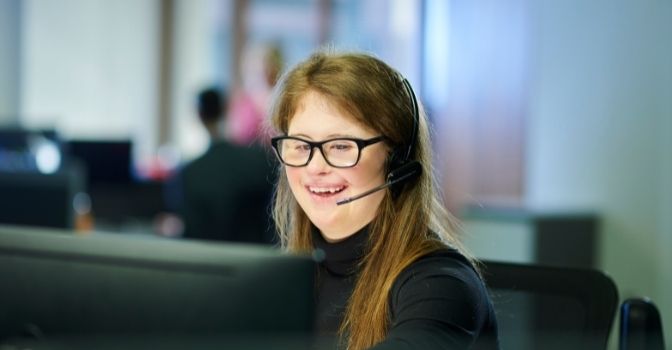Consumers are increasingly seeking out brands that are committed to diversity, inclusion and social issues, according to a recently released report.
The Valuable 500 report Global Trend Report, A look at invisible disabilities in society, explores global trends for the past year, covering topics like awareness, innovation, employment, consumer behaviour and health and wellbeing.
While the report is international, there are some valuable insights for Australian businesses providing goods and services to people with a disability. We take a look at the highlights.
Top global trends.
- Businesses are finding new ways to listen to and incorporate the needs of consumers with disabilities
- The fashion and beauty industries have made considerable progress in disability inclusion however representation in advertising remains low
- Women and people with disabilities have been disproportionately affected by the pandemic.
Diversity and inclusion.
As brands around the world become more committed to inclusion and accessibility, demand has increased for internal diversity and inclusion roles, as well as consultants with relevant expertise.
Purpose-led communication from brands is attaining worldwide reach and helping to raise awareness of invisible disabilities. Sharing by influencers and positive support on social media are breaking down barriers and starting conversations.
- #WorldDownSyndromeDay reached 277,000 mentions on social media
- #WorldAutismAwarenessDay reached 151,000 mentions on Instagram.[1]
Invisible disabilities are being given more air time as celebrities like Lady Gaga and Selena Gomez speak out about long-term conditions.
The report shone a spotlight on the fashion and beauty industry, indicating people are more likely to consider or purchase a product after seeing an ad they think is diverse or inclusive. Up to 75% of beauty users would like to see more people with physical disabilities in advertising.
Investment in inclusive products and services.
While many brands are happy to support disability charities, they’re less inclined to create products specifically for people with disabilities needs. Charitable claims on packaging (such as partnerships or donations) have increased by 3.3% over the past three years.
But this won’t be enough for astute consumers who want brands to go beyond box-ticking and take transparent action towards a safer, more inclusive and accessible world.[2]
There are growing opportunities for companies to invest in innovative, accessible and inclusive products and services, then effectively communicate what they are doing to their customers.
“Inclusive marketing and advertising can lead to growth,” according to the report. However some companies are coming across barriers to market as platforms restrict advertising promoting medical devices. Items such as adaptive clothing are regularly misidentified by platforms such as Facebook and Instagram.
Employment and work.
There’s global recognition of the need for more employment opportunities for people with a disability, which is consistent with the NDIA participant employment strategy and Australian private sector initiatives like the Inclusive Employment Movement, which was co-founded by Leap in!
Companies and government agencies are developing innovative programs to create more inclusive workplaces. For example, in Australia Paralympian Dylan Alcott has launched Able Foods, a profit-for-purpose start-up that provides affordable meals for people with disabilities. Able Foods hires people with disabilities throughout the business in design, marketing and warehousing roles.
Inclusion in the mental health and wellness space.
Mental health remains a top priority among consumers amidst COVID-19. A high proportion of the Australian population is actively seeking ways to reduce stress.
The pandemic, combined with growth in chronic illness and mental health conditions, means the concept of “wellbeing” is being redefined. Wellbeing is expected to blend more with everyday tasks at home and work.
As more companies embrace wellness for employees in the wake of COVID-19 and wellness becomes more mainstream, the needs of disabled people in this space need to be considered.
Emerging opportunities.
- Adaptive clothing: Forecast to be worth around AUD$520 billion by 2026
- Inclusive innovation and design: Investing in great ideas to reach the scale needed for global impact
- Inclusive mental health and wellness programs for people with a disability
- Training programs for people with a disability and initiatives that upskill employees with disabilities
- Including spokespeople, influencers and models from diverse backgrounds in marketing activities.
- Leveraging the benefits of flexible working to improve employment opportunities for people with disability.
Source: A look at invisible disabilities in society
[1] The Valuable 500 Global Trend Report: A look at invisible disabilities in society, Issue Five – July 2021, p.11.
[2] The Valuable 500 Global Trend Report: A look at invisible disabilities in society, Issue Five – July 2021, p.26.
Know someone who is looking for a plan manager?
Leap in! is Australia’s leading NDIS plan manager. We always welcome referrals and have capacity to take on new plan management members.
If you have a client who you believe may benefit from our services, our team of experienced plan managers can help! Call 1300 05 78 78 or email crew@leapin.com.au.
Further reading
7 tips for providing remote support for clients.
How to make your workplace or business more accessible.

